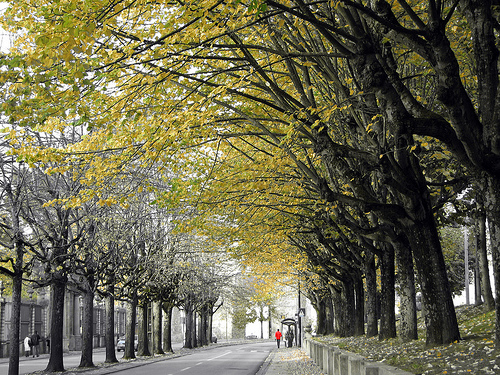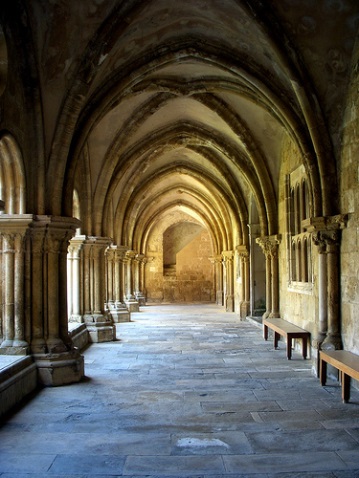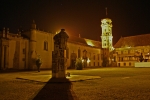Coimbra
Coimbra is a city and a municipality in Portugal, former capital of the country during the first dynastic period and home to the University of Coimbra, the oldest academic institution in the Portuguese-speaking world. The University attracts visitors from around the world due to its monumental buildings and history.
Coimbra is one of the most important urban centers of Portugal after the much larger Lisbon Porto Metropolitan Areas, and plays a role as the chief urban centre of the central part of the country. The city contains archeological remains dating from the time when it was the Roman town of Aeminium, such as its well-preserved aqueduct and cryptoporticus, as well as from the period when it served as the capital of Portugal (from 1139 to about 1260). In the Late Middle-Ages, declining as the political centre of the Kingdom of Portugal, Coimbra began to evolve into a major cultural centre with the foundation of the University of Coimbra in 1290.
The University of Coimbra, Alta and Sofia –has recently been nominated as World Heritage. This recognition by UNESCO was justified by the University’s and its magnificent historical, architectural and cultural heritage surroundings.
|
Location |
 The historic city of Coimbra is located in the central part of Portugal, 120 km south of Porto, 195 km north of Lisbon. One of Portugal’s biggest crossroads, Coimbra is served by the A1, the main highway of Portugal. It is set by the Mondego River, about 40 km east of Figueira da Foz, a neighboring coastal city with several beaches, summer and seaport facilities on the coast of the Atlantic Ocean.
The historic city of Coimbra is located in the central part of Portugal, 120 km south of Porto, 195 km north of Lisbon. One of Portugal’s biggest crossroads, Coimbra is served by the A1, the main highway of Portugal. It is set by the Mondego River, about 40 km east of Figueira da Foz, a neighboring coastal city with several beaches, summer and seaport facilities on the coast of the Atlantic Ocean.
|
Nationwide importance |
The city of Coimbra has a population of about 150,000 inhabitants and a total of 435,000 inhabitants in its Greater Metropolitan Area. Previously capital of the former Beira province, and today the Centro region capital, it is considered the third most important city of Portugal, after Lisbon and Porto, and plays a role as the chief city of the central part of the country. With a dense urban grid the city of Coimbra is famous for its monuments, churches, libraries, numerous parks, gardens, nightlife, shopping facilities and above all for its university, one of the oldest universities in Europe.
|
History and Landmarks |
Its most ancient remains are dated from the time of the Roman domination. The Romans founded the town of Aeminium
which would become the current city of Coimbra. The Iberian soldier of fortune known as El Cid captured the city from the Moors in 1064. In the following century, Coimbra developed into an important cultural centre, firstly due to the school
founded in the Santa Cruz Monastery (1131) where Saint Anthony of Lisbon studied, and later because of the University of Coimbra, founded in 1290. The university is one of the oldest in Europe and attracts students from around the world, which gives the city a special and rare atmosphere. Nowadays it has students from 70 different nationalities; almost 10% of its students are foreigners, being Portugal’s most international university.
|
Economy |
 The wealth of the city, which was the capital of Portugal from 1139 to about 1260, rests mostly on its University with about 23,000 students – the city has a total of 35,000 higher education students considering the other higher education institutions based there – but also in shopping, technology and health sciences industry, administrative offices, financial services, law firms and specialized medical care (the city has many private clinics, medical offices and two large independent state hospital centres: Hospitais da Universidade de Coimbra and C.H.C. – Centro Hospitalar de Coimbra). Handicraft industry is well represented by traditional tapestry and pottery manufacture, and the surroundings of the city have besides forestry, a dynamic horticulture production, vineyards and livestock raising.
The wealth of the city, which was the capital of Portugal from 1139 to about 1260, rests mostly on its University with about 23,000 students – the city has a total of 35,000 higher education students considering the other higher education institutions based there – but also in shopping, technology and health sciences industry, administrative offices, financial services, law firms and specialized medical care (the city has many private clinics, medical offices and two large independent state hospital centres: Hospitais da Universidade de Coimbra and C.H.C. – Centro Hospitalar de Coimbra). Handicraft industry is well represented by traditional tapestry and pottery manufacture, and the surroundings of the city have besides forestry, a dynamic horticulture production, vineyards and livestock raising.
|
Transportation |
The city is internally connected by an extensive bus network, the SMTUC (ServiçosMunicipalizados de TransportesUrbanos de Coimbra, i.e. Coimbra Municipality Urban Transport Services). In the past, the city also had trolleys and a tram network (some are now parked inside a transportation museum). Taxicabs are also available. The city is also a railroad hub and has interregional bus services. An aerodrome for recreation and regional flights is located in Cernache.
Visit Coimbra
For detailed information on what do, what to see and where to go inn Coimbra please check the Tourism web-site: http://www.visitcentro.com/en/destinations/coimbra/
Visit the UC
For detailed information on what to visit on the University Campus please check the following web-site:
http://www.uc.pt/en/informacaopara/visit











